Affiliate links on Android Authority may earn us a commission. Learn more.
Google Pixel 7 Pro: 1x to 30x telephoto zoom, tested
July 20, 2023
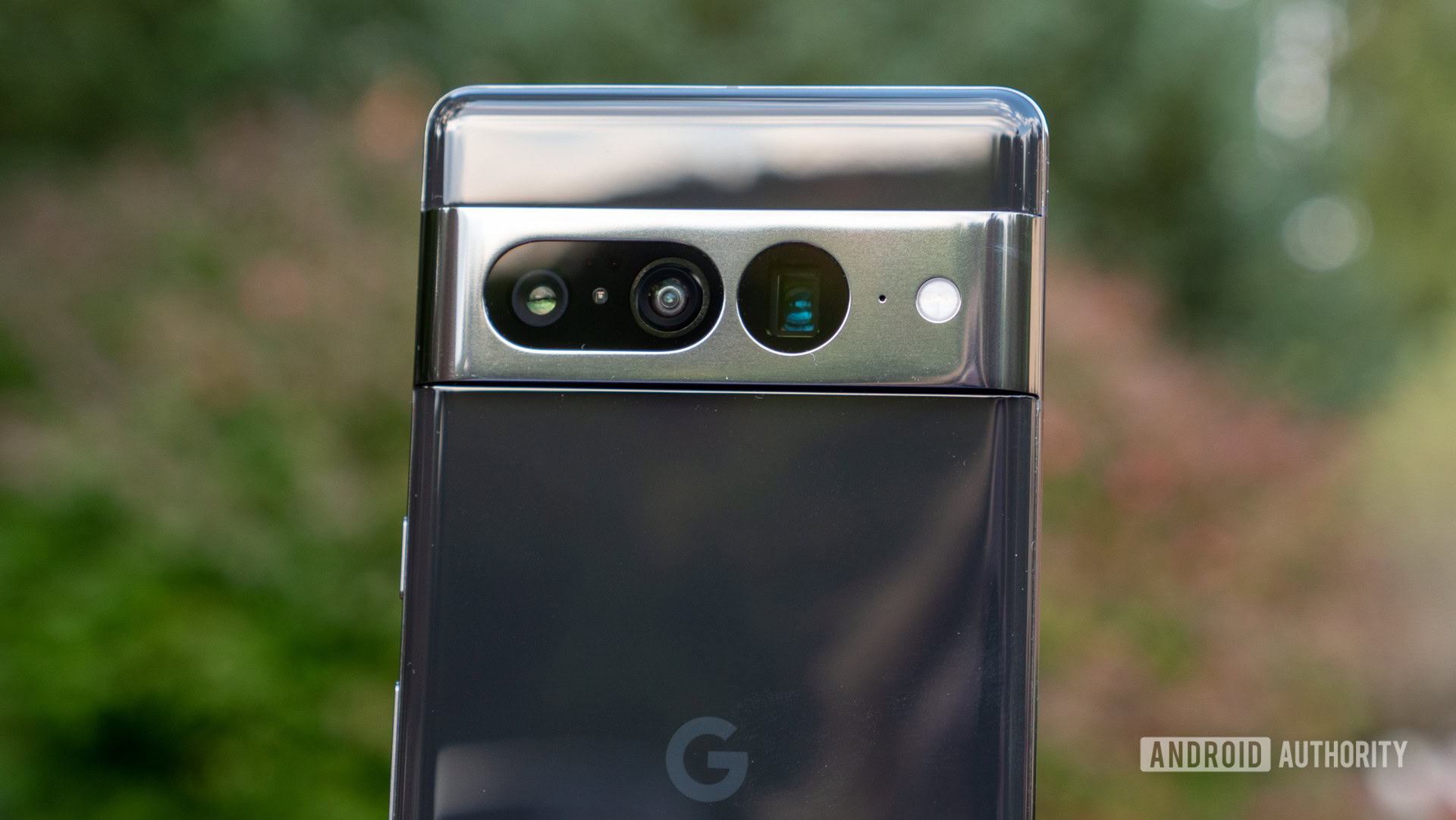
High-quality zoom remains the last major challenge for smartphone photography. Unlike traditional cameras, most phones simply do not have the space for lenses with variable focal lengths. Some manufacturers have tried to solve the challenge by tossing in additional lenses to fill the gap between focal lengths. Google’s approach is slightly different. Starting back with the Pixel 3, Google opted for computational smarts to increase the reach of its smartphones with what it calls Super Res Zoom. The latest Pixel 7 and Pixel 7 Pro build on this foundation. This time around, Google is expanding the Pixel 7 Pro’s reach even further. It has a new-fangled 5x telephoto lens and increases the overall reach to 30x.
Can the combination of machine learning, an AI-optimised chipset, and good ol’ optics help the Google Pixel 7 Pro keep up with some of the farthest-reaching camera phones in the business? Android Authority took the Pixel 7 Pro and Pixel 7 on a trip around Paris and Luxembourg City to try out its zooming chops. Here are the results.
Solving the challenge of zoom
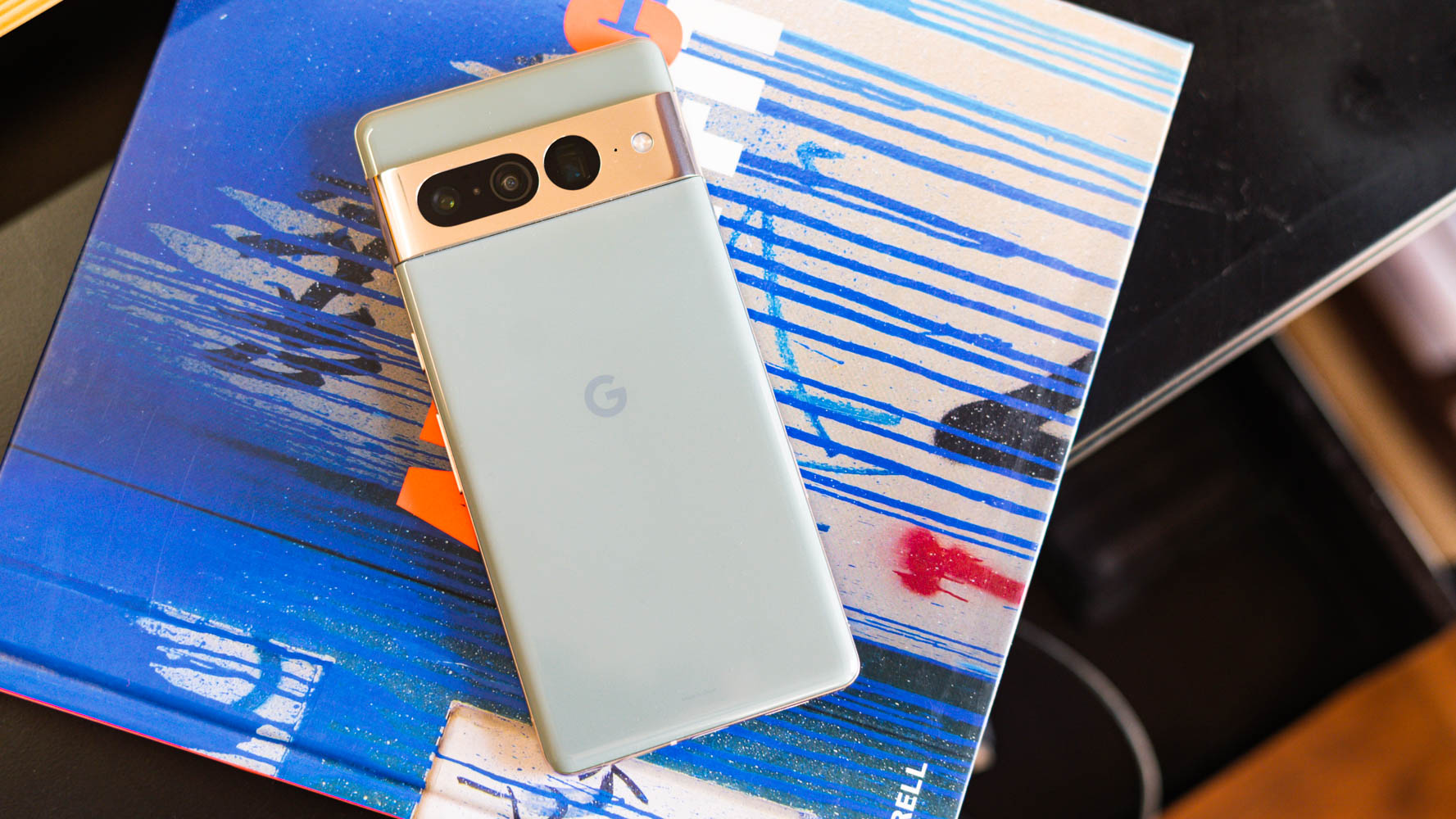
Google’s Super Res Zoom algorithms work by capturing multiple frames. It then composites them and adds in data using machine learning algorithms to compensate for softer details. One of the key advantages of using a high-resolution camera sensor is the ability to crop in losslessly and get a closer shot. For its 2x zoomed-in shots, the Google Pixel 7 and 7 Pro crop into the 50MP primary sensor to extract a 12.5MP image. This image is then re-mosaiced and further enhanced with HDR+ algorithms.
Beyond 2x, the 7 Pro uses ML fusion to combine data from the primary and telephoto cameras to improve quality. This method is applied right up to 5x. It then switches back to a purely optical zoom and is further enhanced by pixel binning to improve low-light sensitivity. Google’s HDR+ algorithms also improve detail and dynamic range. Moving onwards from 5x, we are once again in the software zoom territory. It will use a combination of machine learning algorithms all the way through 10x zoom.
Next up, Google’s 10x zoom implementation takes a center crop from the 48MP telephoto camera and, once again, applies software magic to improve the quality of the shot. Finally, when shooting between the 20-30x range, Google claims to use Super Res Zoom with the Tensor G2 processor’s new ML upscaled models to produce a crisp image.
Are you impressed by the Pixel 7 Pro's telephoto capabilities?
2x zoom
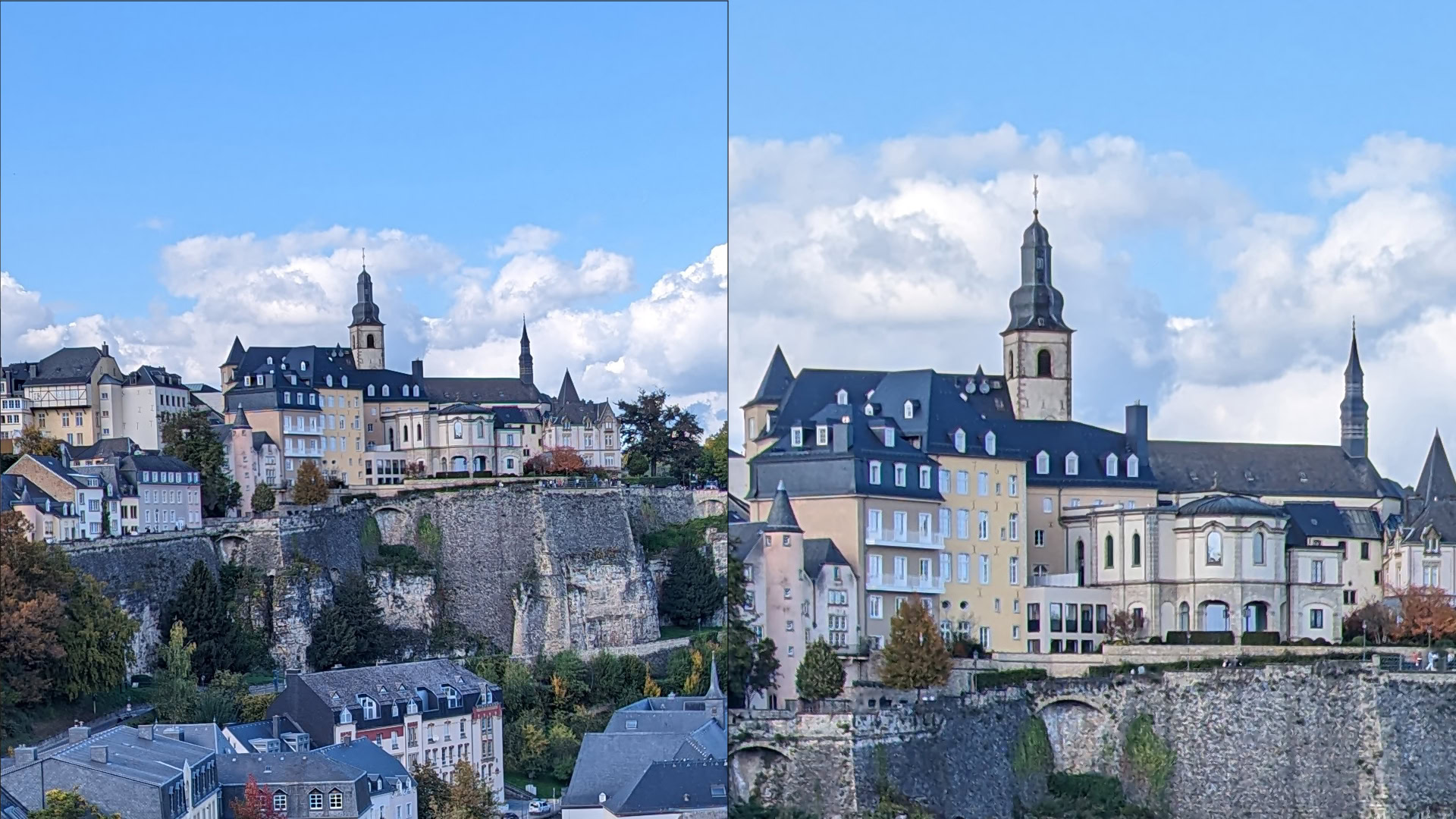
For our first shot, we zoomed in on a standard cityscape. Overcast conditions, as in this situation, reduce the amount of light falling on the smaller pixels. This can have a dramatic effect on the final picture quality. However, the Google Pixel 7 Pro manages very well and outputs a shot that would be ready to go on social media or even small-scale prints.
The Pixel 7 Pro produces presentable shots at 2x zoom, but pixel-peeping reveals signs of color distortion and noise reduction in large blocks of similar-looking material.
However, pixel-peeping tells us a bit more. A closer look at the 100% crop shows clear evidence of softness due to the software-enhanced zoom. Moreover, there are some traces of color distortion as well. As is often the case, the camera struggles to retain details in large swathes of similar-looking objects. The stone and mortar wall, for example, has significantly reduced details.
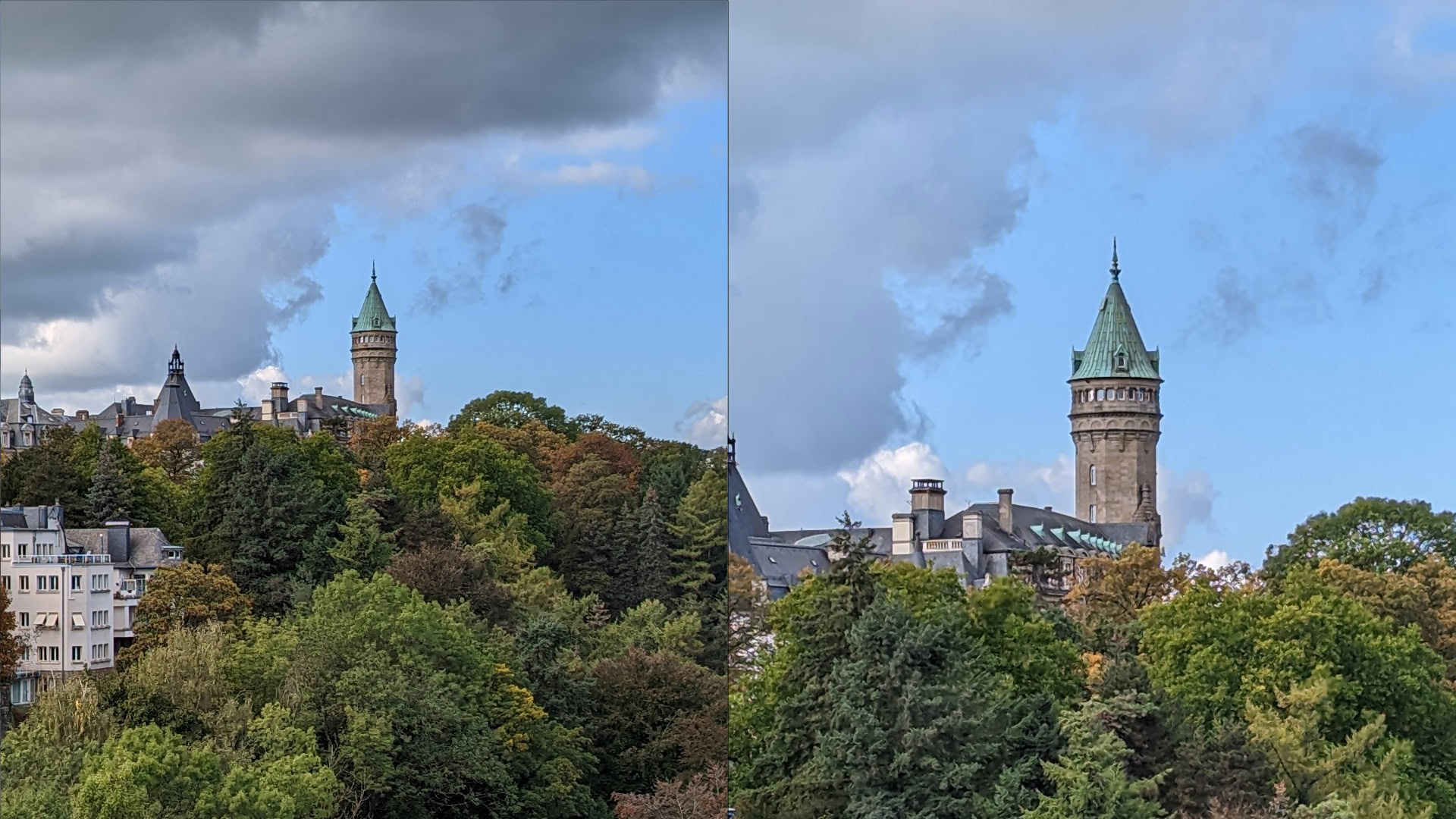
For our second shot, we aimed the Pixel 7 Pro at a setting with dense foliage. Noise reduction algorithms and upscaling algorithms both tend to struggle with large blocks of color, making it the perfect test of the Pixel 7 Pro’s abilities.
As was the case with our first image, the overall shot is presentable, but the limitations of software upscaling become very apparent the moment you zoom in further. Large splotches of leaves have been turned to smoothened-out blocks of green, and the algorithms also struggle with the monotone browns of the tower. Detail is significantly reduced, and you observe some signs of fringing along the spire.
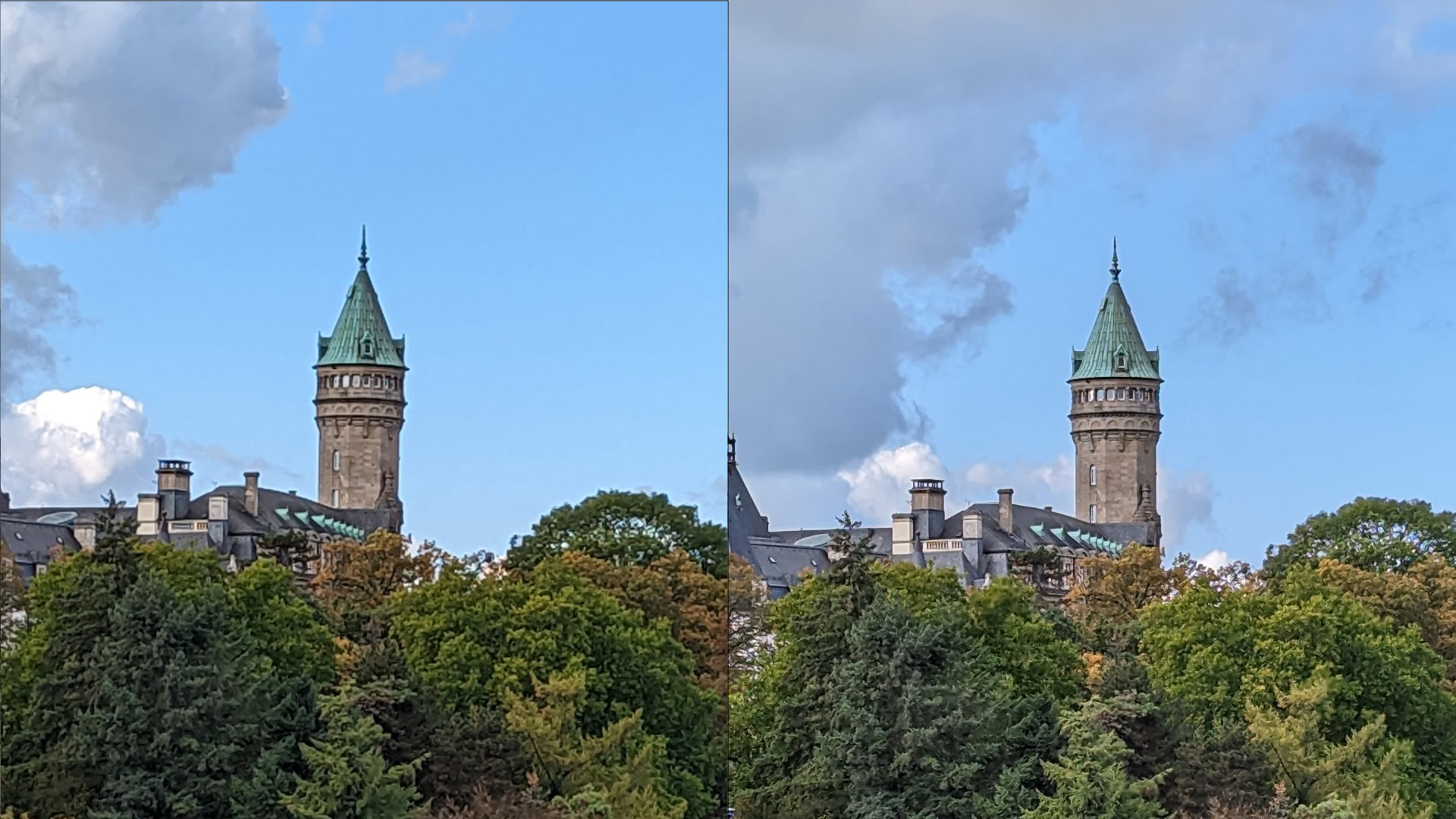
Compared to the previous year’s Pixel 6 Pro, the Pixel 7 Pro is a clear and marked improvement. We shot the same scene with both phones, and the difference is night and day. These 100% crops reveal much more definition in the building and tower when shooting with the Pixel 7 Pro. Google’s latest also shows reduced artifacts in the green cover. Interestingly enough, the Pixel 7 Pro consistently exposed brighter than the Pixel 6 Pro in our tests, indicating a shift towards brighter tones in color processing.
2x to 5x zoom
Google’s machine-learning magic truly comes into its own when shooting beyond the 2x setting. Unfortunately, this is also where the differences between the Pixel 7 and Pixel 7 Pro become much more apparent. But before looking at a comparison, let’s explain why.
For its 3x and 4x zoom settings, Google fuses data from the primary and telephoto sensor to improve the image. New machine learning algorithms further reduce noise and enhance image quality. Since the regular Pixel 7 does not have a telephoto sensor, it relies on standard Super Res algorithms to improve zoom further. Predictably, the level of detail suffers.
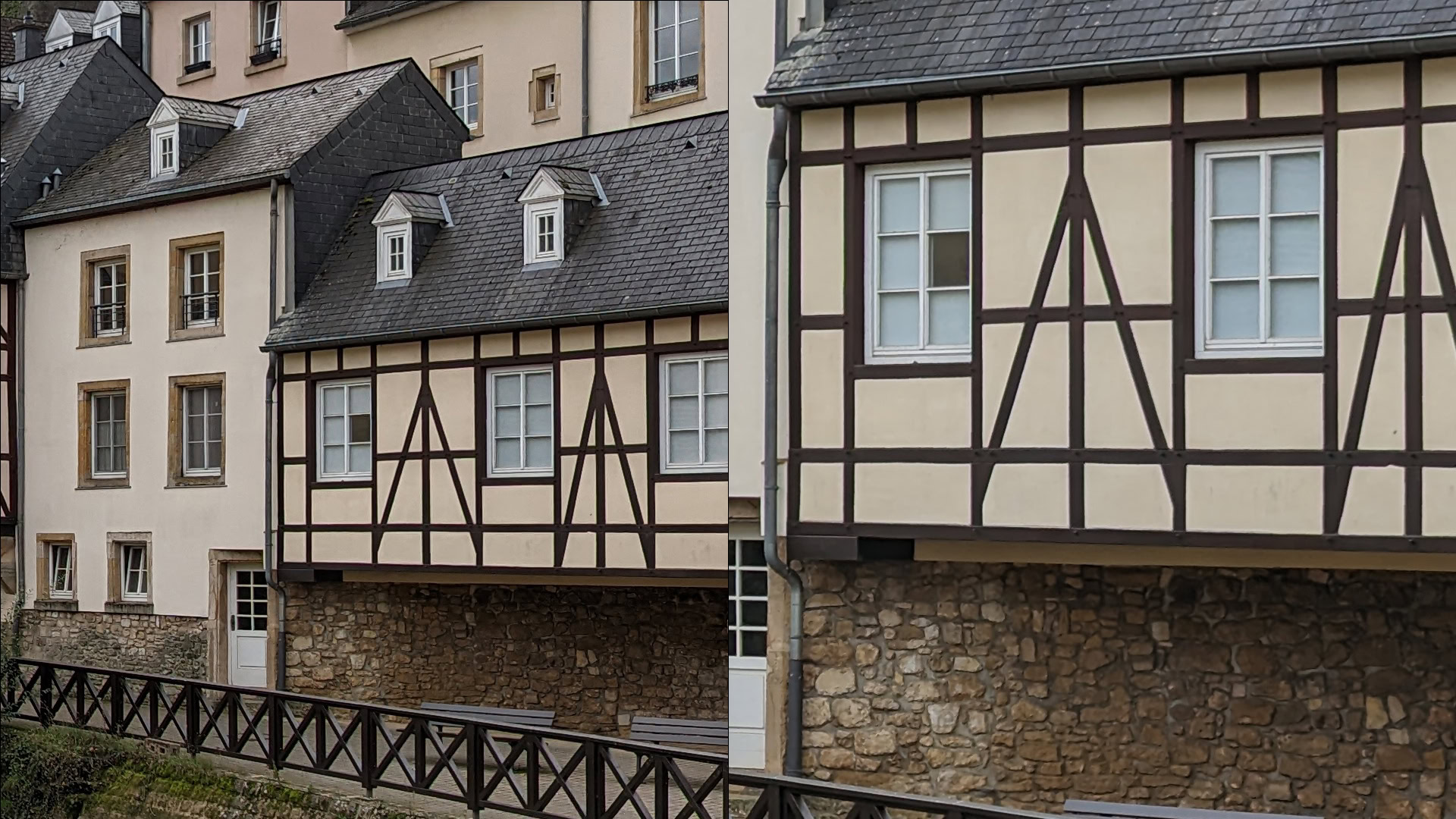
Switching up from 2x to 4x above, the Pixel 7 Pro pulls in data from the telephoto lens to reduce softness and the expected drop in picture quality. Looking at 100% crops, there are telltale signs of softness and upscaling — if you know what to look for.
The Pixel 7 Pro produces well-detailed, evenly exposed shots by fusing data from the primary and telephoto sensor.
However, for the most part, the shots look incredible. The Pixel 7 Pro will more than suffice for casual zoom and shoot situations.
Google’s use of image fusion to spice up details and amp up sharpness is much more apparent when placed next to the regular Pixel 7. The regular Pixel 7 does not have a telephoto lens. It relies on standard Super Res algorithms to improve zoom further. Predictably, the level of detail suffers, as you can see below.
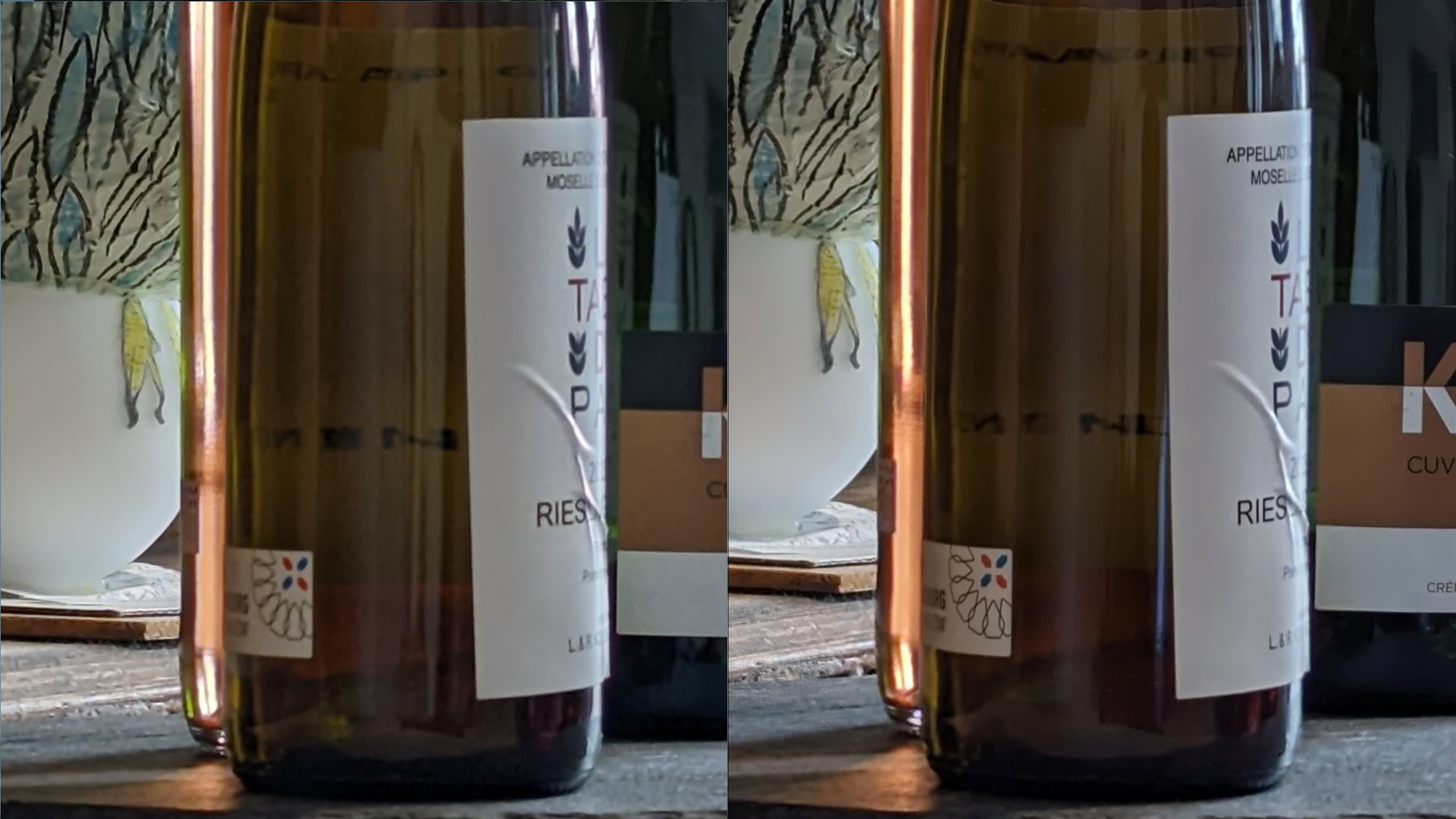
Set to 3x zoom, text and lines around the bottle of wine are significantly sharper on the Pixel 7 Pro. This is expected behavior, as even the best software algorithms can’t compensate for the lack of optically-sourced data. The Pixel 7 doesn’t fare too bad, but the Pixel 7 Pro is clearly miles ahead.
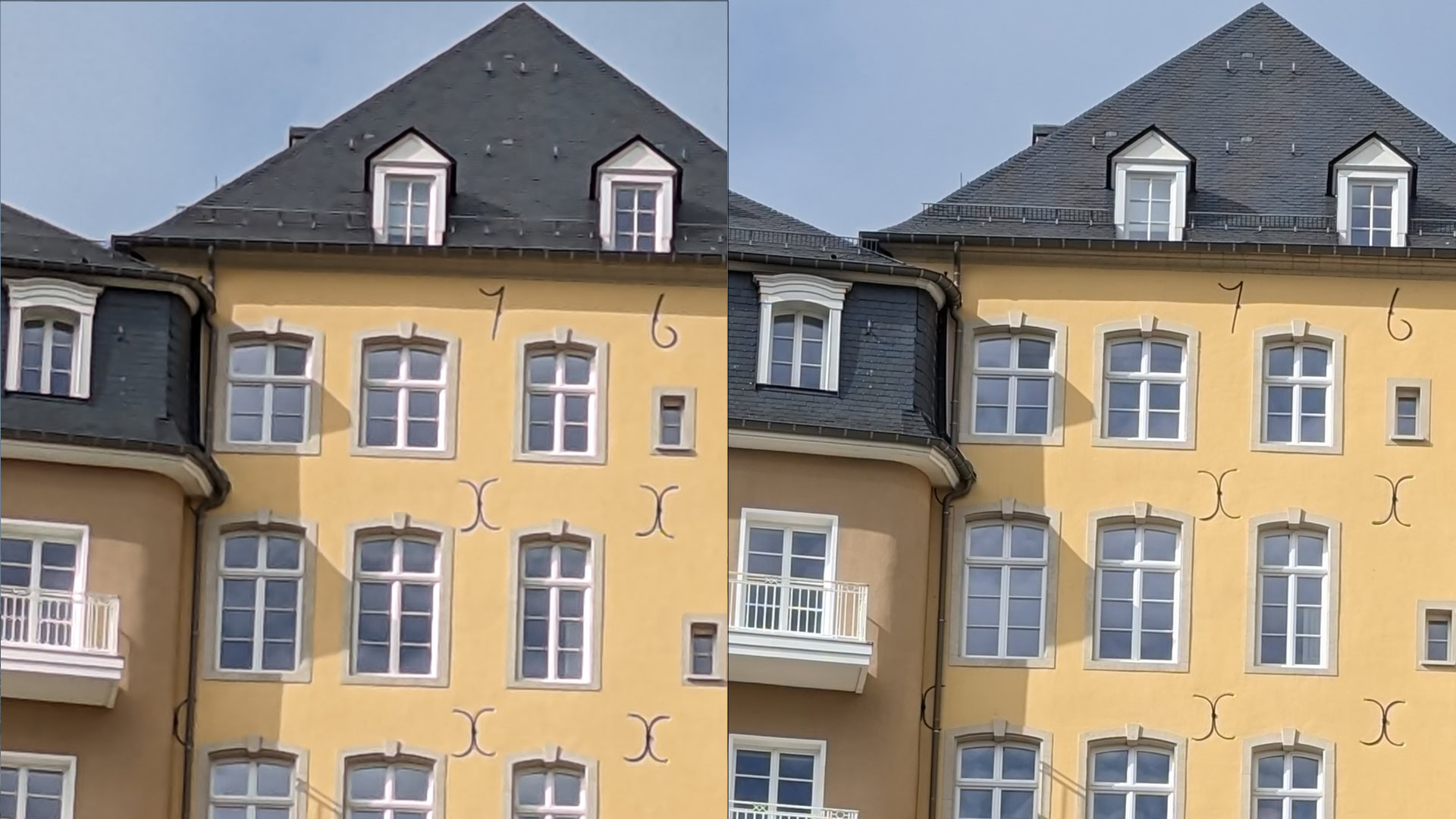
That lack of detail and ensuing issues with software upscaling get magnified when dealing with large blocks of monotonous colors. Case in point, this shot of a building. Neither phone does a poor job at it, but the Pixel 7 displays clear signs of softness around windows. Moreover, the roofing comes through as a large swath of grey due to the combination of upscaling and noise reduction.
The Pixel 7's zoom capabilities start falling apart once you step beyond 2x. The Pixel 7 Pro fares much better.
Google’s Pixel 7 Pro, on the other hand, can upscale accurately by factoring in data gleaned from the telephoto lens. This results in a single sharper image and an accurate representation of the roof.
5x zoom
Switching over to the 5x lens, we are purely in optical territory now. The Pixel 7 Pro’s telephoto shots benefit from both pixel binning and HDR+ algorithms, and the results show it. Images retain the sharpness and characteristic clarity we’ve come to like about photos from Google’s Pixel phones.
Google has done an exceptional job at ensuring that there is no untoward color shift between lenses, and the Pixel 7 Pro maintains excellent exposure metering and dynamic range even when zoomed in. Noise levels are also kept fully in control. In overcast conditions, there is some loss of detail in similar-looking regions like the stone wall and foliage, but that comes with the territory, and image quality is generally on par with the best in the business. I’d go ahead and say that the Pixel 7 Pro’s telephoto shots are fairly unremarkable due to their general excellence.
We also weren’t fans of how Google manages portrait photography using 5x zoom. You can read more about that in our dedicated opinion piece on how The Pixel 7 Pro’s 5x zoom betrays Google’s portrait photography.
10x zoom
Between 5x and 10x, the Pixel 7 Pro falls back to standard Super Res algorithms, and there is a rolling drop-off in picture quality until you get to 10x zoom. Photos clicked at 10x zoom go through the exact same processing as the shots clicked at 2x and are generally very good. Like 2x shots, the camera takes a 12MP crop from the center of the 48MP sensor, re-mosaics the shot, and applies HDR+ scaling to improve detail across the board. Google claims that these shots are as good as optical zoom, but, in our experience, that might be pushing it a bit.
We observed that images clicked at 10x were generally very usable, but the standard rules of photography apply even more when clicking these. You’ll need ample light and a stable subject to maximize the quality of shots. Since the phone relies on a 100% crop from the sensor, it doesn’t enjoy the benefits of pixel binning to increase sensitivity. As a result, low-light shots and subjects in motion tend to look blurred out. While the photos shot at 10x tend to be usable, there is a noticeable softness, and signs of smoothening to even out noise levels are very visible.
Photos shot at 10x look solid but have an obvious softness and signs of smoothening.
Nitpicking aside, it is quite remarkable to see Google’s machine-learning algorithms at play, and most users would be happy to put up the shots on their social media channels.
Beyond 10x zoom
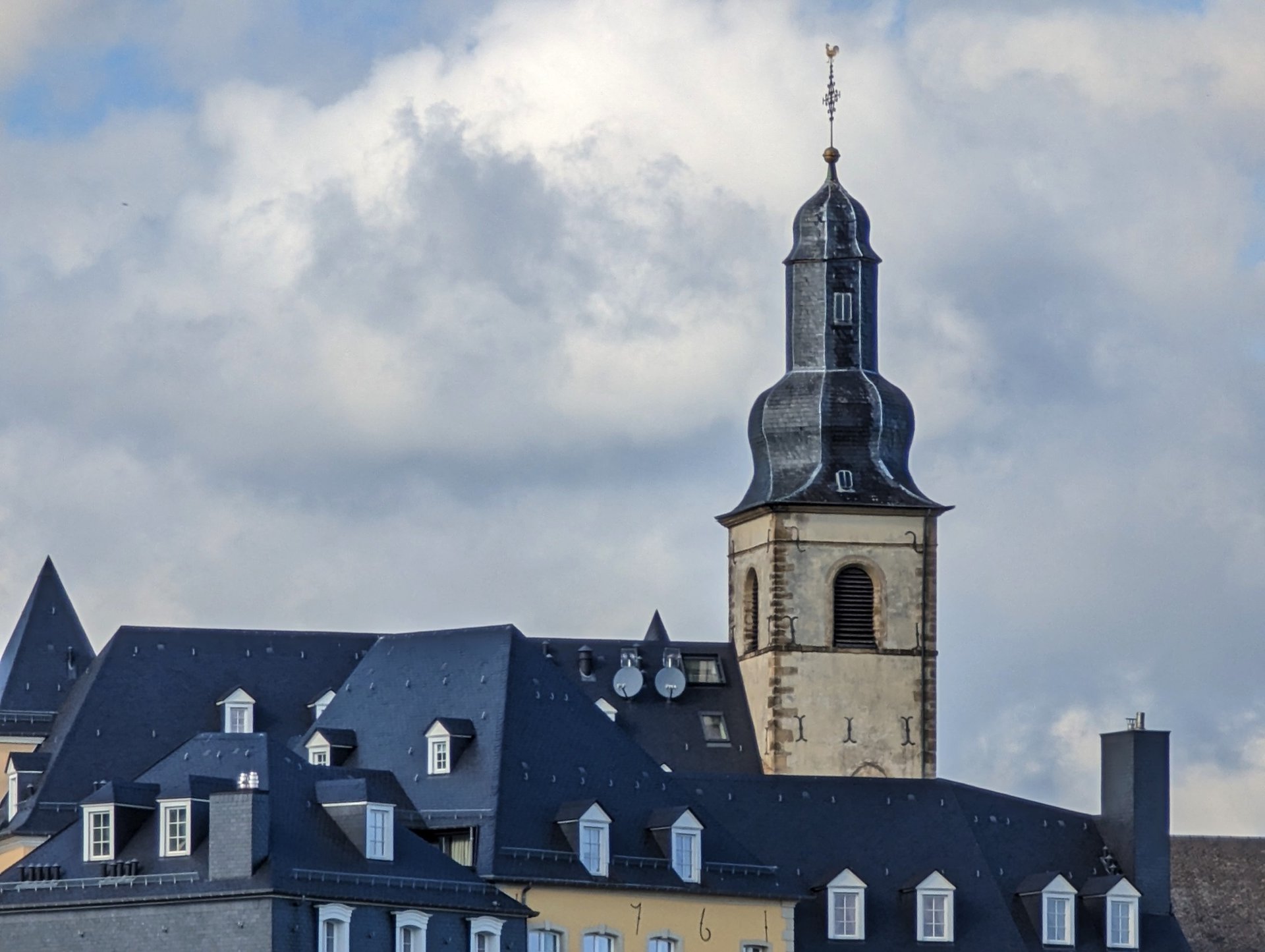
The limits of software-based zoom become much more apparent once you cross the 10x threshold. We’ve previously observed this on phones like the Samsung Galaxy S22 Ultra where small pixel sizes and software upscaling just can’t deliver a very usable shot at long zoom lengths. It’s much the same case with the Pixel 7 Pro.
Even in good light, 15x is about as much as most users would want to push the Pixel 7 Pro. Between the very obvious softness, noise reduction-related smearing, and diminishing color accuracy, the shots aren’t going to win any photography awards.
Pushing it further to 20x broadens the gap in picture quality and noise artifacts, and chromatic aberration becomes even more evident.
For the sake of completion, we’ve included a few 30x zoom samples as well, but between the clear degradation in image quality, significant softness, and noise, we wouldn’t recommend going that far with the Pixel 7 Pro.
Google Pixel 7 Pro: Zooming ahead with confidence
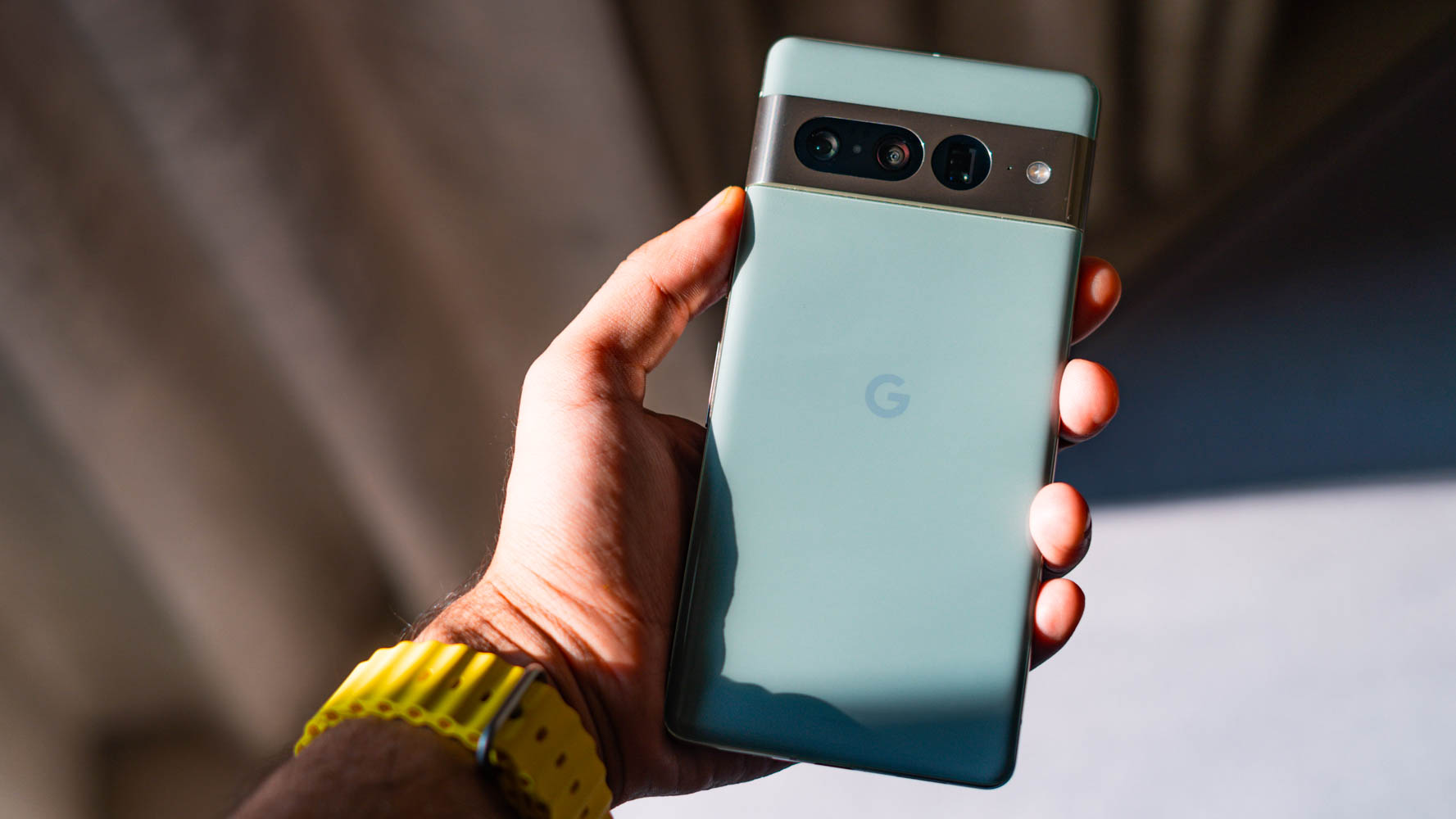
If our walk through Paris and Luxembourg City didn’t make it obvious, the Pixel 7 Pro’s telephoto sensor nails the brief more often than not. It’s not particularly surprising, but Google’s ML chops handily make up for a relatively normal focal range on the Pixel 7 Pro. The phone delivers optical zoom-like quality between the 2x and 5x zoom range. Pushing beyond to 10x, the results hold up extremely well by smartphone standards. It’s only when you go even further than 10x that the limits of algorithmic zoom start showing up.
The Google Pixel 7 Pro doesn't zoom the farthest, but a smaller focused implementation lets it take some of the best snaps we've ever seen.
Overall, focusing on a smaller but more usable zoom range has, arguably, helped Google improve image quality in the focal range that people are likely to use. Highly advertised features like Space Zoom on the Samsung Galaxy S22 Ultra have rarely lived up to the promise. The Pixel 7 Pro’s usable zoom might fall short of the competition’s numbers game, but the results don’t, and we expect most users to be delighted by the images it can capture.
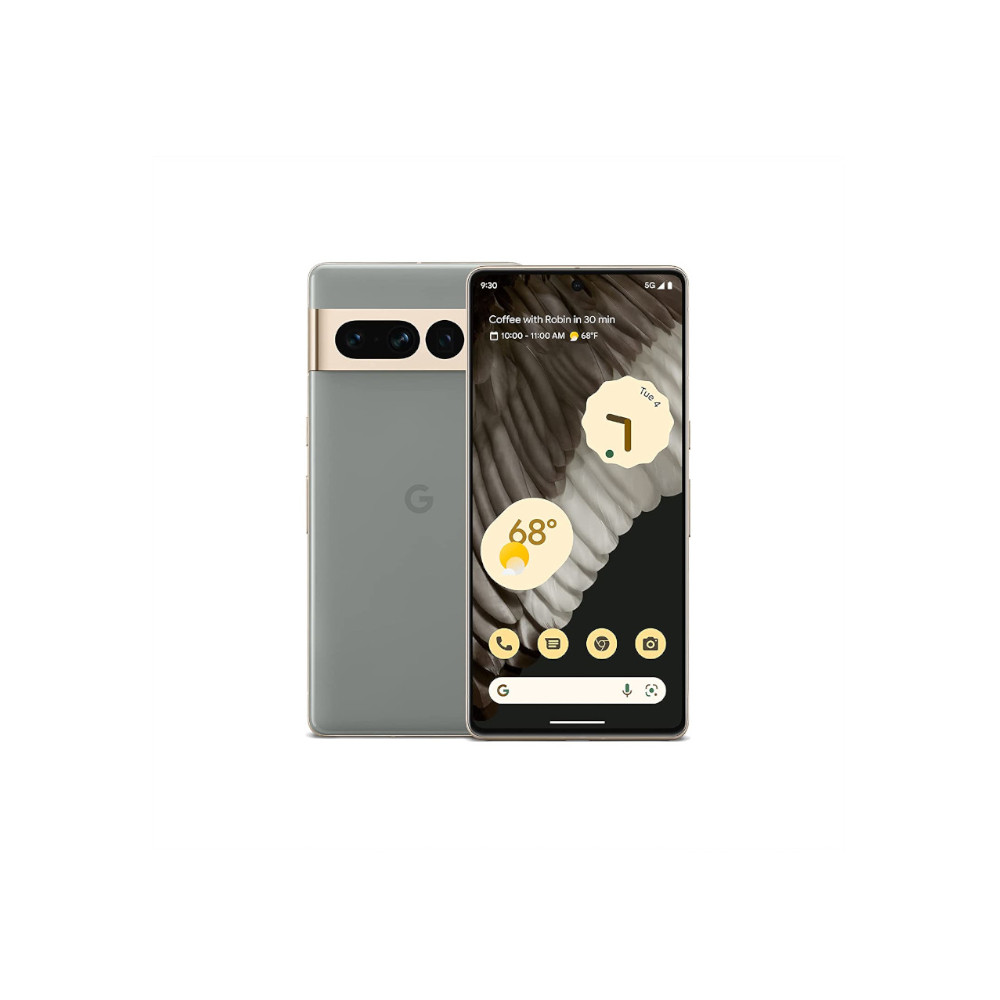

Thank you for being part of our community. Read our Comment Policy before posting.